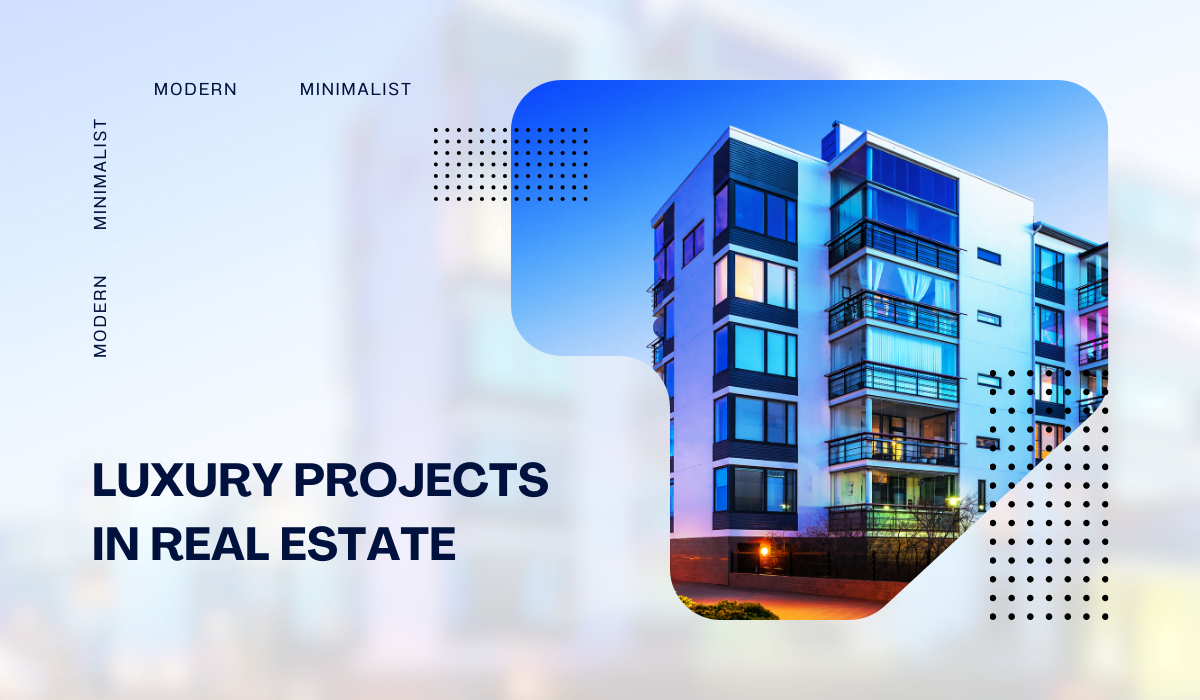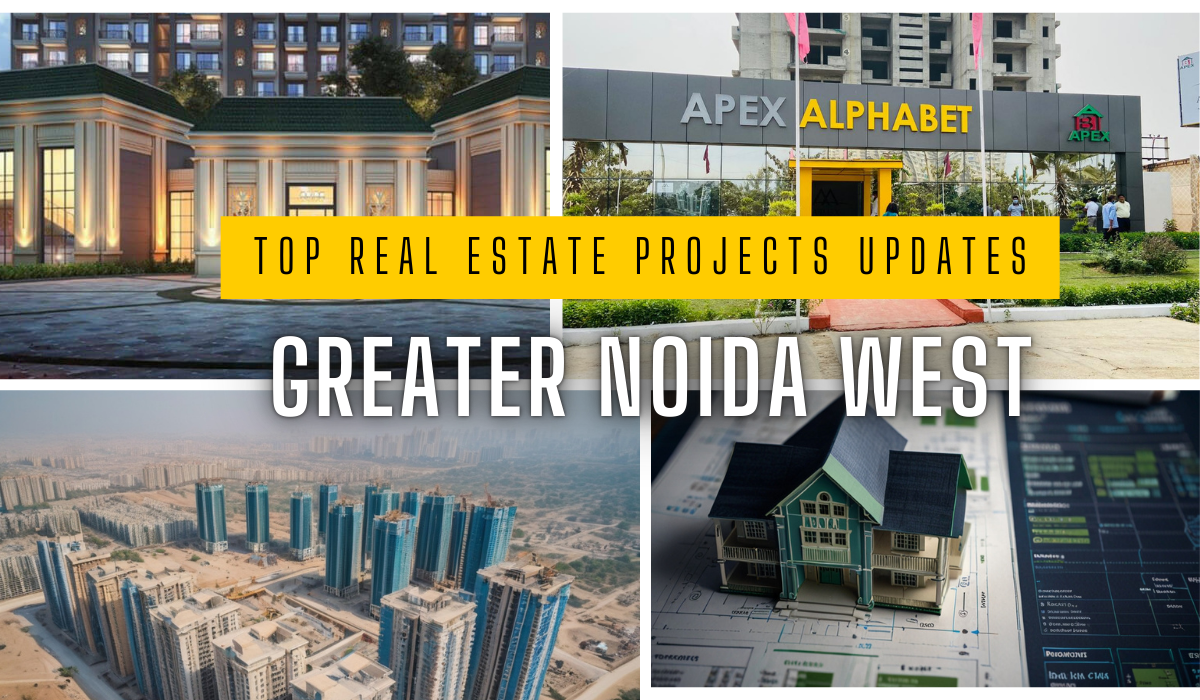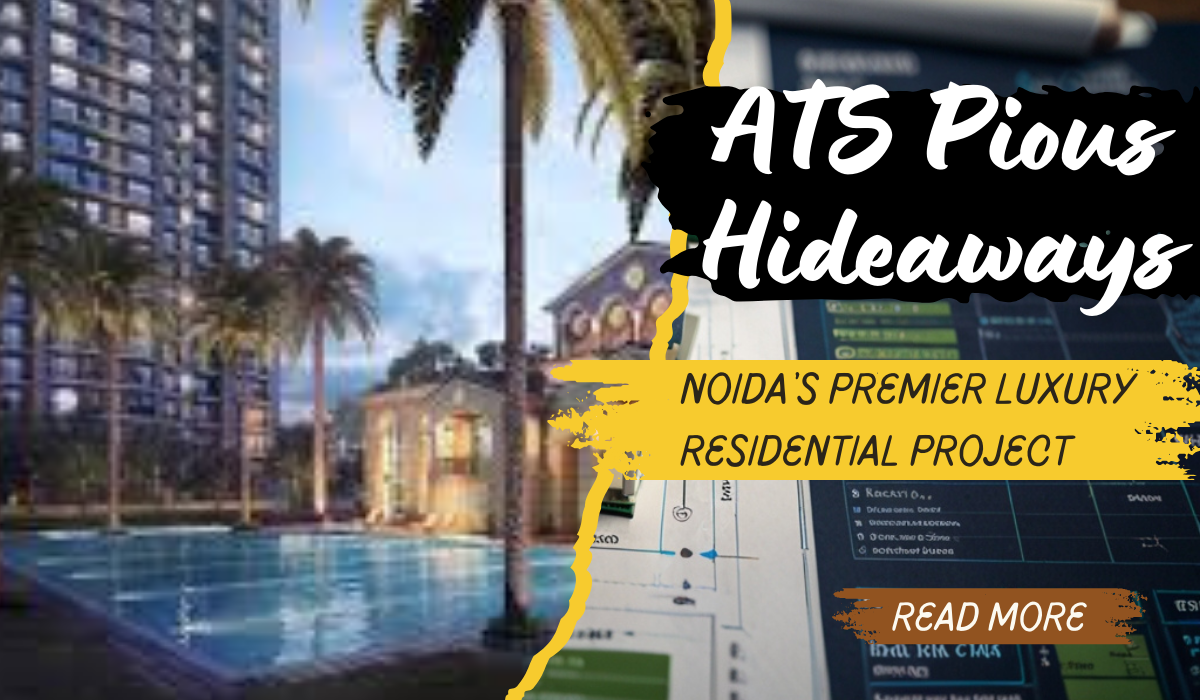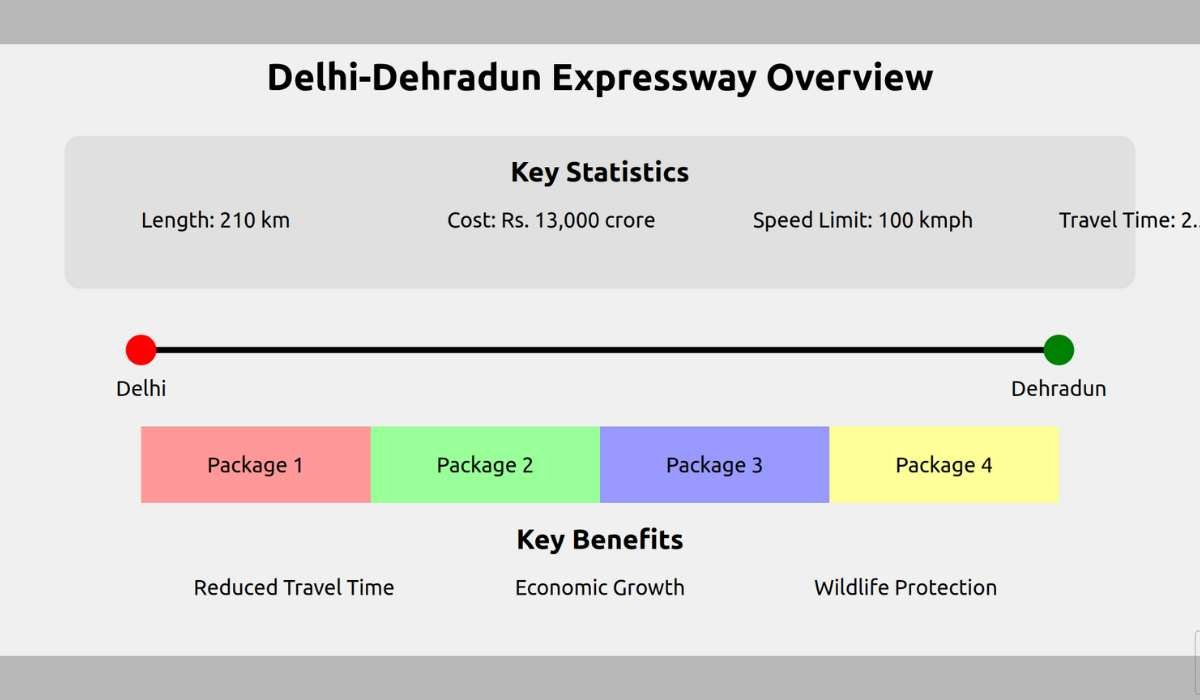In the ever-evolving landscape of residential real estate, the term “luxury” has become ubiquitous, often used as a marketing buzzword by developers to entice buyers. However, defining true luxury in a residential project goes far beyond mere marketing rhetoric. It requires a deep understanding of various parameters that collectively contribute to an elevated living experience. In this comprehensive guide, we delve into the crucial factors that discerning buyers should consider when assessing the luxury quotient of a residential project, shedding light on the nuances that separate genuine luxury from mere hype.
The Power of Location – Decoding the Prestige of Pin Codes
The location of a project is often touted as the primary determinant of its value, and rightly so. A prestigious pin code can significantly enhance a project’s allure and investment potential. Developers like Godrej, for instance, have leveraged the power of a coveted pin code, such as 110001 in Delhi’s Connaught Place, to attract buyers seeking a prime address. Deepak Patondiya, a real estate training coach, emphasizes, “If your PIN code is good, then your police patrolling will be very good, your city will be very good, which will develop your infra very well. Plus, you understand how much property tax people are paying there. If property tax is paying more, then the development of that area will be more.”
A desirable pin code not only promises better infrastructure, security, and quality of life but also implies higher property taxes, which typically translate into increased development and maintenance of the area. It serves as a powerful indicator of the prestige and exclusivity associated with a particular locality, setting the tone for the luxury experience that awaits within the project’s boundaries.
Project Surroundings – Elevating the Living Experience
The immediate surroundings of a residential project play a pivotal role in shaping the overall luxury experience. Discerning buyers should evaluate the following aspects:
Demographic Profile
Assess the income levels and social standing of the residents in the vicinity, as these factors contribute to the area’s overall development and amenities. A high concentration of high-net-worth individuals often translates into a thriving ecosystem of premium services, retail establishments, and leisure facilities catering to their discerning tastes and preferences.
Infrastructure
Examine the existing and upcoming infrastructure, including roads, metro connectivity, and access to essential services like healthcare, education, and leisure facilities. A well-developed infrastructure not only enhances convenience but also contributes to the overall quality of life, a hallmark of true luxury living.
Unlock Your Dream Home Today!
Get personalized real estate insights delivered straight to your inbox.
Government Focus
Gauge the level of investment and development initiatives planned by the central and state governments for the area, as this can significantly enhance the project’s long-term value. Government initiatives such as infrastructure upgrades, public transportation improvements, and the establishment of educational or healthcare facilities can positively impact property values and the overall living experience.
Safety and Security
Evaluate the safety and security measures in place, such as police patrolling and surveillance systems, to ensure a sense of well-being and peace of mind. A secure environment is a fundamental aspect of luxury living, providing residents with the freedom to enjoy their surroundings without compromising on their personal safety or privacy.
In Gurgaon, locations like Golf Course Road, Golf Course Extension Road, New Gurgaon, and Dwarka Expressway have emerged as premium destinations, offering a blend of infrastructure, connectivity, and modern amenities that cater to the discerning tastes of luxury homebuyers.
Builder Credibility – The Foundation of Quality and Trust
The reputation and track record of the developer play a crucial role in determining the project’s overall quality and timely delivery. Buyers seeking true luxury should evaluate the following aspects:
1. Background and Experience
Assess the builder’s history, the number of projects delivered, and the feedback from existing customers regarding construction quality and maintenance. A reputable builder with a proven track record of delivering high-quality projects on time is a hallmark of a reliable and trustworthy partner in the pursuit of luxury living.
2. Financial Stability
Analyze the builder’s balance sheet and financial standing, as this can impact the project’s timely execution and overall quality. A financially stable builder with a strong balance sheet is better equipped to weather economic fluctuations and allocate adequate resources towards delivering a truly luxurious living experience.
3. Partnerships
Examine the builder’s collaborations with reputed design firms, landscape architects, and construction partners, as these alliances often result in elevated standards and superior execution. Renowned partners in the fields of architecture, design, and construction can significantly enhance the overall quality and aesthetics of a luxury project.
Prominent builders like ATS Homecraft, with a stake from HDFC Capital, have garnered trust through their adherence to construction timelines, quality standards, and transparent fund management. Karan Jain, a third-generation realtor, emphasizes the importance of scrutinizing the builder’s credibility, stating, “If you see the past delivery of the builder, in 2008-2012, many new builders had come and were launched in the market. They had launched their new projects, and many of them are not present today. You won’t see them, they are not in good condition. Or if they have made a few projects, they are not good. Or people have not made any money. Or they have not been delivered with a very good quality.”
By thoroughly evaluating a builder’s credibility, buyers can make informed decisions and mitigate the risks associated with investing in a luxury project.
Apartment Luxury – The Ultimate Living Experience
While evaluating a project’s luxury quotient, it is essential to assess the intrinsic features and amenities that contribute to the overall living experience within the apartment itself. Consider the following factors:
1. Design and Layout
Evaluate the thoughtfulness behind the design and layout, ensuring ample space, natural light, and ventilation. Aspects like wraparound balconies, ceiling heights (ideally 11.5-12.5 feet), and open layouts are hallmarks of luxury. Deepak Patondiya emphasizes, “If your ceiling height is 12 feet, 12.5 feet or even 11.5 feet, then you can keep it in the luxury category according to ceiling height. Any apartment with 10-10.5 feet height you can’t call it luxury because if the ceiling height is more than you, you can hang decorative items in it like chandeliers and all that, so you can keep it in a luxury because the ceiling height is very good.”
2. Amenities
Assess the range and quality of amenities offered, such as infinity pools, temperature-controlled swimming pools, clubhouses with various indoor games, co-working spaces, amphitheaters, and outdoor sports facilities. Luxury living often encompasses a comprehensive suite of amenities catering to diverse interests and lifestyles.
3. Smart Home Integration
Explore the extent of smart home technology integration, including features like home automation, air purification systems, and other cutting-edge solutions. As technology continues to evolve, luxury homes are increasingly embracing smart solutions that enhance convenience, comfort, and energy efficiency.
4. Customization Options
Consider the flexibility offered by the builder to customize and personalize certain aspects of the apartment to cater to individual preferences. The ability to tailor living spaces to one’s unique tastes and requirements is a hallmark of true luxury, allowing residents to create a bespoke living environment that reflects their personal style and aspirations.
Density and Exclusivity – Preserving Privacy and Serenity
Luxury living is often synonymous with exclusivity and a sense of privacy. Evaluate the following density-related factors:
1. Units per Acre
Ideally, a high-end luxury project should have 40-45 families per acre, ensuring ample open spaces and a serene living environment. Karan Jain emphasizes, “According to our analysis, if 40 to 45 families are living in a project, then it comes in a high-end luxury project.”
2. Units per Floor
Projects with 2-3 units per floor offer a heightened sense of exclusivity and privacy, minimizing crowding and enhancing the overall living experience. Karan Jain explains, “If we talk about luncheon, it is very important that how many flats per floor are there. You will note in some projects that 2 flats per floor or 2 apartments per floor or 3 apartments per floor. And there are many projects today in which 4 apartments per floor builders are launching.”
3. Tower Placement
Examine the placement of towers within the project, ensuring adequate spacing between them to maintain optimal air flow, natural light, and unobstructed views. Jain cautions, “If the placement of your towers is let’s say we discuss that there are 2 units on 1 floor in 1 project. So if the placement of the towers is in continuation, it works no problem because you will get ventilation from both sides of your flat, but if in a project you have 4 units per floor and your tower cluster is in single line, then the ventilation, air and sunlight will be affected. The air will stop for a long time.”
By carefully considering density and exclusivity factors, buyers can ensure that their luxury living experience is not compromised by overcrowding or a lack of privacy, preserving the serenity and tranquility that are hallmarks of true luxury.
Vicinity and Access – Enhancing the Living Experience
The immediate surroundings and accessibility of a project can significantly impact the overall luxury experience. Consider the following aspects:
1. Views and Vistas
Evaluate the views offered from the apartments, ensuring they overlook scenic landscapes, architectural marvels, or well-planned commercial and residential areas, rather than unsightly or undesirable surroundings. A breathtaking view can be a defining feature of a luxury residence, elevating the overall living experience and contributing to a sense of exclusivity and tranquility.
2. Access and Approach
Assess the ease of access to the project, including the quality of approach roads and proximity to major transportation hubs or arterial routes. Convenient access not only enhances daily commutes but also contributes to the overall desirability and value of the property.
Projects like those along Golf Course Road in Gurgaon command premium prices due to their favorable vicinity, access, and unobstructed views. Karan Jain highlights, “If we talk about Golf Course Road, then today on Golf Course Road, the rate is between 20,000, 22,000 and 25,000 rupees. Many new builders came to the market and launched their new projects. Many of them are not even present today. You won’t even see them or even talk about them.”
By carefully evaluating the vicinity and access, buyers can ensure that their luxury living experience is not compromised by undesirable surroundings or inconvenient accessibility, further enhancing the overall value and appeal of their investment.
Open Green Spaces – Embracing Nature
Luxury living often encompasses a harmonious blend of contemporary amenities and natural elements. Evaluate the following aspects related to open green spaces:
1. Landscape Design
Assess the thoughtfulness behind the landscape design, including the integration of parks, walking trails, and recreational areas. A well-designed landscape can contribute to a sense of tranquility and provide opportunities for outdoor leisure activities, enhancing the overall quality of life.
2. Horticulture and Maintenance
Examine the quality of horticulture and the maintenance plans in place to ensure the longevity and beauty of the green spaces. Meticulously maintained gardens and green areas not only enhance the aesthetic appeal but also contribute to a healthier and more sustainable living environment.
“How much green area is there in a project? How much green area is there? If a project has a good landscaping company has been given a contract for project designing. So Horticulture will give you a lot of feeling. You will enjoy walking in it, roaming in it. Overall, in that project, whenever you come and go to your house, you will get a good feeling.”
By prioritizing thoughtful landscape design and horticulture, luxury projects can create an oasis of natural beauty, providing residents with a serene and rejuvenating environment that seamlessly blends modern living with the beauty of nature.
Evaluating Luxury through the Builder-Buyer Agreement
While assessing the luxury quotient of a project, it is crucial to carefully scrutinize the builder-buyer agreement, as it outlines the terms and conditions that govern the transaction. Property Duniya, a real estate information platform, sheds light on some critical aspects to consider:
1. Open Parking Spaces
According to a Supreme Court decision, open parking spaces cannot be sold separately, as they are considered common areas and should be handed over to the residents’ association for management. However, some builders may include the price of parking spaces in the quoted price and mention it in the sale deed, while others may charge extra for parking.
2. Amenities and Facilities
In many cases, builders do not transfer the ownership of amenities like clubhouses, gyms, and tennis courts to the residents’ association. Instead, they retain ownership and continue to generate profits from these facilities. As a result, residents are required to pay maintenance expenses without having ownership rights.
3. Price Escalation Clauses
Most builder-buyer agreements contain price escalation clauses, which give the developer the opportunity to change the apartment area and cost. This can create uncertainty for buyers regarding their financial obligations and the final cost of the property.
4. Conditions Favoring the Builder
Since the builder-buyer agreement is typically drafted by the developer, the conditions are often skewed in their favor, with limited consideration for consumer rights and interests.
It is crucial for buyers to carefully review and understand the terms of the builder-buyer agreement, seeking legal counsel if necessary, to ensure that their interests are protected and that they are fully aware of the financial implications and ownership rights associated with their investment.
Evaluating Luxury through Sample Flats
In an effort to attract buyers, many builders showcase sample flats that may not accurately represent the actual units being sold. Property Duniya highlights some common tricks employed by builders in their sample flats:
1. Absence of Doors
To create an illusion of more space, builders often remove doors between rooms in sample flats, including those for bathrooms and toilets. This can mislead buyers about the actual layout and flow of the living spaces.
2. Wall Finishing
Wall finishing in sample flats is often deceiving, with the use of gypsum boards instead of traditional bricks and plaster. This technique, combined with thinner walls, can make the sample flats appear larger than they truly are.
3. Ceiling Height
Builders may purposefully increase the ceiling height in sample flats to create a more spacious and airy feel. However, the actual units may have lower ceiling heights, which can impact the overall sense of openness and luxury.
4. Designed Interiors
Sample flats are typically furnished with designer furniture and décor, creating a sense of comfort and luxury that may not be representative of the actual units being sold.
5. Strategic Views
Builders often position sample flats to offer desirable views, such as park-facing or open spaces, even though the actual units may face less appealing vistas or have obstructed views.
It is essential for buyers to approach sample flats with a critical eye and understand that they are primarily marketing tools designed to showcase the project in the best possible light. Buyers should seek clarification on the actual specifications and features of the units they are considering, rather than relying solely on the impressions created by the sample flats.
Comparing Pricing and Payment Plans
When evaluating luxury projects, it is crucial to consider not only the base selling price but also additional charges and payment plans, as these can significantly impact the overall cost and value proposition. Property Duniya highlights some key factors to consider:
1. Additional Charges
In addition to the base selling price, buyers should factor in additional charges such as those for parking, club membership, preferential location charges (PLCs), GST, and possession charges. These charges can vary significantly between projects and can have a substantial impact on the overall cost.
2. Payment Plans
The payment plan offered by the builder can also influence the effective price of a property. Saurav, a real estate expert, explains, “If Signature Global Deluxe DXP, with an average price of 13,000 rupees per square foot, had offered a 30-40-20-60 payment plan instead of a construction-linked plan, the effective price would have increased by approximately 1,000 rupees per square foot.”
3. Construction-Linked Plans
Construction-linked payment plans, which tie payments to the project’s construction progress, can often result in higher overall costs compared to more favorable payment terms, such as subvention schemes or upfront discounts.
By carefully evaluating pricing structures, additional charges, and payment plans, buyers can make informed decisions and ensure that they are getting the best value for their investment in a luxury project.
The Role of Market Research and Expert Guidance
Jain further elaborates, “If you liked this content and you think our discussion was helpful to you, then please like and subscribe to our channel so that we can reach you directly with our videos and our hard work can be successful.”
Market research involves analyzing various factors, such as pricing trends, developer reputations, project specifications, and market demand, to identify potential investment opportunities and risks. By leveraging the expertise of experienced real estate professionals, buyers can gain valuable insights into the local market dynamics, developer track records, and project viability, enabling them to make well-informed decisions.
Additionally, real estate experts can provide guidance on navigating the legal and financial aspects of luxury property investments, including contract negotiations, financing options, and tax implications. Their knowledge and experience can help buyers avoid potential pitfalls and ensure that their interests are protected throughout the process.
Emerging Trends and Future Outlook
The luxury real estate market is constantly evolving, influenced by technological advancements, shifting consumer preferences, and changing economic conditions. As we look towards the future, several trends are expected to shape the luxury residential landscape:
1. Sustainability and Eco-Friendliness
Environmentally conscious buyers are increasingly seeking residential projects that prioritize sustainability and eco-friendliness. This includes features such as energy-efficient systems, water conservation measures, and the use of eco-friendly building materials. Luxury projects that embrace sustainable practices are likely to gain a competitive edge in the market.
2. Smart Home Integration
The integration of smart home technologies is rapidly becoming a defining feature of luxury living. Homebuyers are seeking seamless integration of various systems, including lighting, climate control, home automation, and security, into a unified and intuitive platform. Projects that offer cutting-edge smart home solutions will be well-positioned to cater to the evolving demands of tech-savvy buyers.
3. Health and Wellness Amenities
In the wake of the COVID-19 pandemic, there has been a heightened focus on health and wellness in residential living. Luxury projects are expected to incorporate amenities such as state-of-the-art fitness centers, yoga studios, and even dedicated wellness spaces that promote holistic well-being.
4. Multigenerational Living
As the concept of multigenerational living gains traction, luxury projects may increasingly cater to the needs of extended families by offering larger units with flexible layouts and dedicated spaces for various age groups.
5. Experiential Living
Beyond just physical spaces, luxury buyers are seeking experiences that enhance their quality of life. This could include curated events, exclusive access to cultural experiences, and personalized concierge services that cater to their unique lifestyles and preferences.
By staying abreast of these emerging trends and adapting to the evolving needs of luxury buyers, developers can remain competitive and continue to deliver exceptional living experiences that meet the highest standards of luxury.
Conclusion
Navigating the luxury real estate market requires a deep understanding of the multifaceted factors that contribute to a truly exceptional living experience. From the prestige of the location and the credibility of the developer to the intricate details of apartment design, amenities, and community features, each aspect plays a crucial role in defining luxury.
By carefully evaluating these parameters, conducting thorough market research, and seeking guidance from experienced professionals, discerning buyers can make informed decisions and identify projects that genuinely offer an elevated and enriching lifestyle.
It is essential to look beyond the marketing rhetoric and critically analyze factors such as density, exclusivity, vicinity, open green spaces, and the terms of the builder-buyer agreement. By doing so, buyers can ensure that their investment aligns with their expectations of a truly luxurious living experience, one that harmoniously blends contemporary amenities with natural beauty, privacy, and a sense of serenity.
As the luxury real estate market continues to evolve, embracing sustainability, smart home integration, and experiential living, developers and buyers alike must stay attuned to these emerging trends. By staying ahead of the curve and prioritizing innovation, the pursuit of true luxury can be realized, elevating residential living to new heights of sophistication and refinement.
In the end, the journey towards luxury living is a deeply personal one, shaped by individual preferences, lifestyles, and aspirations. By taking a holistic approach and carefully navigating the intricacies of the market, buyers can unlock the doors to a world of unparalleled luxury, where every aspect of their living experience is meticulously curated to exceed their wildest expectations.
The luxury quotient is determined by several factors, including location, project surroundings, builder credibility, apartment features, density and exclusivity, vicinity and access, open green spaces, and the builder-buyer agreement.
A prestigious location enhances a project's allure and investment potential. It often promises better infrastructure, security, and quality of life, as well as higher property taxes that can lead to increased development and maintenance.
Buyers should assess the builder's background, experience, financial stability, and partnerships with reputable design and construction firms to gauge their credibility and track record in delivering quality projects.
Key features include thoughtful design and layout, high-quality amenities, smart home integration, and customization options that allow residents to tailor their living spaces to their preferences.
A luxury project typically has fewer units per acre and fewer units per floor, which enhances privacy and minimizes crowding, thereby providing a more serene living environment.
Open green spaces contribute to a harmonious living experience by integrating nature with contemporary amenities, enhancing residents' quality of life through recreational opportunities and tranquility.
Buyers should scrutinize the agreement for terms related to parking spaces, ownership of amenities, price escalation clauses, and any conditions favoring the builder to protect their interests.
Buyers should approach sample flats critically, understanding that they may not represent actual units and looking for clarifications on features and specifications of the properties they are considering.
Current trends include sustainability and eco-friendliness, smart home integration, health and wellness amenities, multigenerational living, and a focus on experiential living.
Market research helps identify potential investment opportunities and risks, while expert guidance provides insights into local market dynamics, developer reputations, and legal aspects, ensuring informed decision-making.
DISCLAIMER
The information provided on this website is for general informational purposes only. While we strive to keep the content up-to-date and accurate, we make no representations or warranties of any kind, express or implied, about the completeness, accuracy, reliability, suitability, or availability of the information, products, services, or related graphics contained on this website.
In no event will we be liable for any loss or damage including without limitation, indirect or consequential loss or damage, or any loss or damage whatsoever arising from loss of data or profits arising out of, or in connection with, the use of this website.
Real Estate Investment Risks
Real estate investments involve significant risks and market volatility. Property values, rental rates, and market conditions can fluctuate. Past performance is not indicative of future results.
Before Making Real Estate Decisions
Before making any real estate decision, we strongly advise you to:
- Conduct thorough due diligence
- Consult with qualified legal, financial, and real estate professionals
- Carefully review all relevant documents and contracts
- Consider your personal financial situation and investment goals
This website does not provide legal, financial, or investment advice. All content is for informational purposes only and should not be construed as professional advice or recommendations.
By using this website, you acknowledge and agree to these terms. We reserve the right to modify this disclaimer at any time without notice.







